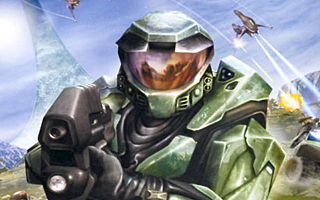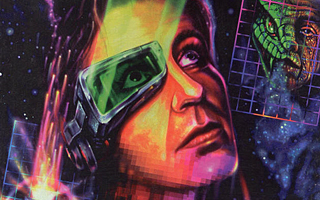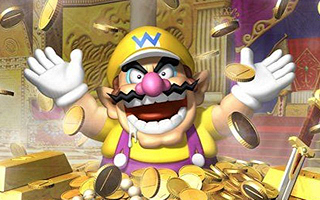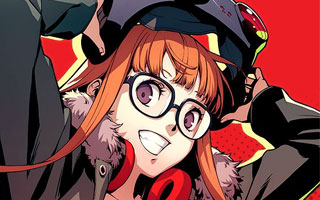The Soviet Mind Game
Top 10 Best Versions of Tetris!
Tetris is the brainchild of a Soviet engineer named Alexey Pajitnov. Drawing inspiration from the pentomino puzzles that he had played with as a kid, Pajitnov created a simple game to evaluate the capabilities of new computers at a national research academy. Everyone who picked up the game saw its potential, however, and Tetris was quickly ported to PCs, arcades, home consoles, keychains, and pretty much everything else that had a screen. It was a rare title that was equally suited to playgrounds and board rooms, and it helped the industry reach demographics that didn’t typically play video games. Although Tetris is simple enough for everyone to understand, it also has near-limitless replay value. That’s one of the reasons for its enduring popularity over the decades. Tetris celebrated its 40th anniversary in 2024, so it’s the perfect time for a deep dive. With that in mind, this countdown highlights the best versions of Tetris that have ever been released. Although it’s impossible to completely disregard historical impact, it should be noted that this isn’t a list of the most influential version of Tetris. The Game Boy version helped defined the entire handheld gaming space in 1989, but that doesn’t guarantee it a spot on this countdown. (Also, this list will only include “official” versions of Tetris, so don’t expect to see the likes of Tetr.io or Jstris.) Although the basic premise of Tetris hasn’t changed much, the rules and play mechanics differ from one game to the next. Whether you prefer classic Tetris or modern iterations, I hope you’ll view this list as a celebration of one of the most important games of all time.
10
Tetris (PSP)
2009

The PSP’s capabilities were more in line with contemporary home consoles than typical handhelds, and Sony positioned the device as a significant leap forward for the portable gaming space. Surprisingly, a simple version of Tetris wound up being my most-played game on the system. Tetris was released as a “PS mini” title that was only available via download. It arrived just in time for the digital-only PSP Go in 2009, but critics balked at the $10 price tag for some reason. EA Mobile didn’t reinvent the wheel with their version of Tetris, but they were kind enough to include a dozen gameplay variants to experiment with. The Treadmill mode shifts the entire stack horizontally with every drop, while the Magnetic mode will force the pieces left or right depending on their color. These extra modes are a fun diversion, and I appreciate how the game tracks your progress. I spent most of my time playing standard Tetris with no gimmicks, however. The presentation is straightforward and the visuals are nothing to write home about, but Tetris is a great fit for the system. The music is more of a mixed bag, but I grew to appreciate the soundtrack over time. (The track that plays when you hit Level 6 is especially infectious, and I dig the “Pink Floyd meets Russian folk music” vibe.) An enhanced PS3 version of Tetris added online multiplayer and a handful of other features, but I’m singling out the PSP version because the game lends itself so well to the handheld format.
9
Tetris (NES)
1989

The NES version of Tetris is a product of its time in many ways, and it doesn’t have any of the modern conveniences that fans have come to rely on. There is no hard drop or ghost pieces, you can’t hold pieces for later, and the blocks lock in place almost immediately after they land. You won’t be able spin the tetrominoes endlessly, and they won’t rotate at all if they’re already butted up against a wall. The randomizer is unforgiving too. While modern Tetris variants distribute the pieces evenly, the NES version offers you no guarantees. You can’t count on certain pieces showing up in a timely fashion, and the game will punish you if you don’t have a contingency plan in place. Classic Tetris is more unpredictable than modern variants, and the emphasis is placed on careful planning and the ability to improvise. In this capacity, it’s Tetris in its purest form. This is one of the reasons why it still has a loyal following to this day. When people in the Tetris community talk about “classic” Tetris, they’re most likely referencing this version. The competitive scene is still thriving in 2024, and it’s fun to watch from the sidelines as new strategies are being developed. Nearly two dozen versions of Tetris had been released by the time Nintendo got their hands on the property, and two of them could be played on Nintendo’s 8-bit console. Rest assured, there’s a reason why Nintendo’s version stood out from the pack. The music is catchy, it’s aesthetically pleasing, and the controls are precise. The planned two-player mode was tragically left on the cutting room floor, but the single-player experience is deeply engaging.
8
Tetris Party Deluxe
2010

One of the reasons why the Wii was so successful was because it appealed to casual audiences. In this sense, Tetris was a perfect fit for the console. Any version of Tetris would have been welcomed with open arms, but Hudson Soft deserves credit for going the extra mile. In addition to the standard Marathon and Versus modes, Tetris Party introduces a host of new gameplay experiences. Beginner mode swaps the standard Tetronimoes with oversized pieces, for example, while Shadow mode tasks players with arranging the falling blocks to form specific shapes. The Co-Op mode draws inspiration from Tengen Tetris, and it allows two players to work together on an oversized playfield. Field Climber is more akin to Tetris Plus, and it requires you to create makeshift staircases to help a little dude reach the top of the screen. There’s tremendous variety, and I haven’t even touched on the party aspect yet! Even though the online servers were discontinued years ago, you can still play the game locally with up to four players. There’s a lot of interesting power-ups, and some of them even make use of the Wii remote’s pointer functionality. On a related note, the game goes out of its way to utilize every feature available on the Wii. It was one of the few games to support the Wii Speak microphone, it lets you play with the Mario Kart steering wheel, and one of the most interesting modes revolves around the Wii Fit balance board! Hudson got a lot of mileage out of the Tetris license in the years that followed, but Tetris Party Deluxe offers experiences that can’t be had elsewhere.
7
Tetris DS
2006

Nintendo has developed several versions of Tetris over the years, but Tetris DS is easily their most ambitious effort. It feels like a love letter to the NES in many regards, and it’s hard not to be enamored by the nostalgia-driven presentation. The game features unique themes based on popular (and not-so-popular) franchises, and it was cool to see obscure titles like Devil World being referenced alongside heavy hitters like Mario and Metroid. Each theme has its own background music too, and there are some great renditions of classic tunes from the 8-bit era. The game also features five brand new gameplay modes based on classic Nintendo titles. The Puzzle mode draws inspiration from Yoshi’s Cookie, for instance, while the Mission mode has a Zelda theme. There’s a lot of fun to be had on the multiplayer side of things, too. The online component has been disabled for years, but local multiplayer still supports up to ten people off a single cart! Unfortunately, the game’s lenient rotation system trivializes high-score runs and hurts the replay value. The controls are tight and everything feels responsive, but the game is hampered by the dreaded “infinite spin” mechanic. Players can rotate pieces indefinitely to prevent them from locking in place. This gives them all the time in the world to plan their next move, and it goes against the spirit of Tetris despite being mandated by the Tetris Company’s own guidelines! Tetris DS would have been in contention for the top spot on this list if only it didn’t provide players with an obnoxiously large safety net.
6
Tetris: The Absolute – The Grand Master 2 Plus
2000

Sega’s version of Tetris didn’t have a lot of traction in the West, but it had a huge impact on Japan’s arcade scene in 1988. Concepts like lock delay, delayed auto shift, and spawn delay greatly improved maneuverability at high speeds, and it was possible to rotate pieces and move them laterally during the same frame. Sega’s Tetris was highly influential, and that’s where Tetris The Grand Master comes into play. Arika borrowed heavily from Sega’s version, right down to the color scheme, but they put their own spin on the franchise by introducing a new ranking system. Players are assigned grades as they progress, and the ultimate goal is to reach the title of Grand Master. This is easier said than done, as you’ll have to contend with ludicrous speeds and deal with “instant gravity.” In this scenario, the pieces will spawn at the bottom and you’ll only have a few frames to shift them into place. There are four mainline TGM games, but I’m acknowledging the updated version of the second entry for a few reasons. The gameplay is even faster than the original, but there’s also a new casual mode if you don’t want the stress. The Versus mode was also updated, and there are nearly 20 items to experiment with. One of the items will swap the player’s playfield with their opponent’s, while another will change their opponent’s Tetronimoes every time they’re rotated. If you’d prefer something less competitive, the cooperative Doubles mode might pique your interest. Some high-level players prefer TGM3, but it lacks many of the features of its immediate predecessor. TGM2 also has a friendlier difficulty curve, and the game does a better job of bridging the gap between the Normal and Master modes. I’ll never be as good at the games as they want me to be, but TGM feels like Tetris in its purest form.
5
Tetris DX
1998

If this was a list of most significant Tetris games, the original Game Boy version would be in contention for the number one position. It brought Tetris to the masses and helped establish handheld gaming as we know it. Tetris was a perfect fit for the Game Boy, and its importance to the industry cannot be overstated. With that said, Tetris DX is the better game overall. It launched alongside the newly-minted Game Boy Color in 1998, but its garish color pallet wasn’t much of a selling point for me. The new music was also a let down, and it wasn’t nearly as catchy as the OG. Fortunately, the game offered a number of meaningful gameplay refinements. If you play the games back-to-back, you’ll immediately notice how much more responsive Tetris DX is than its predecessor. The delayed auto shift makes the 1989 version feel laggy in comparison, and the new rotation system is more in line with modern Tetris rules. The game doesn’t feature modern conveniences like ghost pieces, but there are still plenty of quality of life improvements to discuss. Unlike its predecessor, Tetris DX has a battery back-up to save your high scores. It also allows you to suspend your play sessions. If your batteries are dying or your lunch break is ending, you can simply turn off the Game Boy and jump back in at a later time. (You could potentially start a session on your TV via the Super Game Boy, take the cart out, and then continue on the small screen without missing a beat!) Quick resume features are commonplace today, but the idea was still novel in the ’90s. If you somehow grow tired of the single-player modes and can’t find any friends to link up with, Tetris DX let’s you play against a CPU opponent. The computer will even adjust to your skill level, and this adds another layer of depth to one of the medium’s most replayable titles. After all of these years, Tetris DX is still my preferred way to play Tetris on the go.
4
Puyo Puyo Tetris 2
2020

As its name implies, Puyo Puyo Tetris 2 incorporates elements from two iconic puzzle franchises. It wouldn’t be entirely fair to include a crossover title on this list, however. On that note, we’ll disregard any modes that are built around Puyo Puyo rules. (This includes the lengthy Adventure mode, which is genuinely hilarious.) Most of the modes allow you to ignore the Puyo Puyo component completely, so there are plenty of options if you’re looking for a more traditional Tetris experience. The majority of these modes can be played by four players simultaneously, and you have the option of playing online or locally. If you can’t get enough friends together, you can always add computer opponents to the mix. I was especially fond of the four player Party mode, and the various power-ups facilitate exciting momentum shifts. Puyo Puyo Tetris 2 is similar to its immediate predecessor in most regards, but the newly introduced Skill Battles add another element of depth. This mode could be likened to a JRPG in many regards, and it allows you to assemble teams of characters that each have their own unique skills. Of course, you could always play with no gimmicks at all if that’s your prerogative. I love the colorful presentation and the eccentric cast of characters, but Puyo Puyo Tetris 2 would be worthy of a spot on this list even without all the added fanfare since the gameplay is virtually flawless. The ability to play as Sonic the Hedgehog is merely a bonus as far as I’m concerned.
3
Tetris Battle Gaiden
1993

Tetris Battle Gaiden is the most slept-on game on this countdown by virtue of the fact that it was never released outside of Japan. The Super Famicom exclusive was developed by Bullet-Proof Software, and it draws heavy inspiration from the Puyo Puyo series. In lieu of the usual marathon and line clear modes, Tetris Battle Gaiden is centered entirely around one-on-one battles. Whether you’re playing against a human or a CPU opponent, the game is filled with interesting mechanics that can’t be found in any other version of Tetris. One of the simplist innovations involves the preview window. Both players have to draw from the same pool of pieces, and this leads to all sorts of new strategies. You may find yourself racing to secure a certain piece before it’s distributed to your opponent. In other instances, you might intentionally slow down so that your opponent will be saddled with a piece they can’t use. Some of the tetrominoes have crystals in them, which can be collected when you clear a line that contains one of them. If you gather enough of these crystals, you’ll be able to use a special move. Depending on the scenario, you can potentially black out your opponent’s playing field, prevent them from rotating their pieces, or temporarily take over their controls altogether. Each of the game’s ten characters has four unique special moves at their disposal, so you’ll have to expect the unexpected. If the prospect of special moves doesn’t excite you, you also have the option of playing the game with classic Tetris rules. The “Chain” mode was actually my preferred way to play, however. With this option enabled, blocks will fall individually after a line has been cleared rather than moving together in a line. This ultimately allows disparate pieces to fall into gaps below in order to set off exciting chain reactions. If you like back-and-forth gameplay with thrilling momentum shifts, then the Chain mode is exactly what you’re looking for. The play mechanics in Tetris Battle Gaiden are truly unique, and I also love the presentation. The game is overflowing with personality and the character theme songs are surprisingly catchy.
2
Tetris Effect: Connected
2020

When people focus on something for an extended period, the object of their fixation can shape their thoughts, perceptions, and dreams. This phenomena is known as the Tetris effect, and it refers to the way in which Tetris players will continue to envision falling blocks long after they’ve stopped playing the game. This premise is something that Tetsuya Mizuguchi understands all too well. The visionary creator of Rez and Lumines is always looking for ways to transcend the video game medium, after all. Like many of his previous works, the gameplay in Tetris Effect is tied to the beat of the music. The eclectic soundtrack includes everything from tribal beats to improvised jazz riffs, and the game somehow makes you feel like you’re making music. The visuals are also influenced by the player’s actions, and the game takes you on a journey through dozens of mesmerizing dreamscapes filled with vibrant colors and dazzling particle effects. Tetris Effect also introduces a number of new gameplay elements. The time-suspending Zone mechanic is especially notable, and I loved having the opportunity to clear additional lines without having to worry about falling blocks. If you’re a traditionalist, you’ll be glad to know that the enhanced Connected version of the game features an assortment of new modes that play homage to its forebears. One of these modes is inspired by the original 1984 computer version, while another is based on the 1989 NES release. The visuals, sound effects, and rulesets change from one mode to the next, and this makes Tetris Effect: Connected one of the most comprehensive versions of the game ever released. Whether you’re playing on a high-end PC, strapping on a VR headset, or leveraging the portability of the Nintendo Switch, the game doesn’t feel quite as snappy as some of the other versions on this list. It still warrants a high ranking, however. It may not be the best choice for high-end players, but I’ve never been more immersed in a Tetris game.
1
Tetris 99
2019

Battle royale games like Fortnite and PUBG were all the rage when Tetris 99 was released, but I was surprised by how well the “last man standing” premise worked with a puzzle game from the ’80s. Tetris 99 was released as a free download for Nintendo Switch Online members, and it’s still the best reason to subscribe to the service. A standard match in Tetris 99 starts with a field of 99 players and slowly whittles them down until there’s a sole survivor. You’ll be able to send garbage pieces to your opponents when you clear multiple lines at once, but there are no special items or secret gimmicks to speak of. There’s always going to be an element of randomness when 99 players are involved, of course, and this is especially true in Tetris 99 since it’s not easy to target specific opponents. Although you’ll run into situations where you are unfairly targeted by multiple players, the best players will be able to survive these onslaughts more often than not. The intensity ramps up each time another player is eliminated, but the randomness is also diminished since there’s fewer opponents to contend with. Each match feels like a chaotic free-for-all in the beginning, but you’ll be more responsible for your own fate once the field has been narrowed down. The concept is fantastic, but the only reason why it works so well is because the game engine is so solid. Everything feels perfect from a mechanical standpoint, and I’d expect nothing less from an Arika-developed Tetris game. Although the online battles are the bread and butter of Tetris 99, the DLC includes a traditional marathon mode and allows you to play against the CPU in offline battles. My biggest gripe with the game has to do with its bare-bones presentation. Fortunately, players can unlock dozens of themes that have distinct backgrounds, sound effects, music tracks, and UI elements. Many of these themes are based around iconic Nintendo properties, and one of them even makes everything look (and sound) like the original Game Boy version of Tetris. Sadly, you’ll need to partake in some “games as a service” shenanigans in order to access these themes. I hate when developers trickle feed us content via “daily challenges” instead of giving us a more reasonable way to earn it. Unlocking all of the themes is a bit of a slog, but it’s not enough of an issue to knock Tetris 99 from the top of this list.





Do you agree with this list? Let us know what you think by leaving a comment below. Your opinion matters!